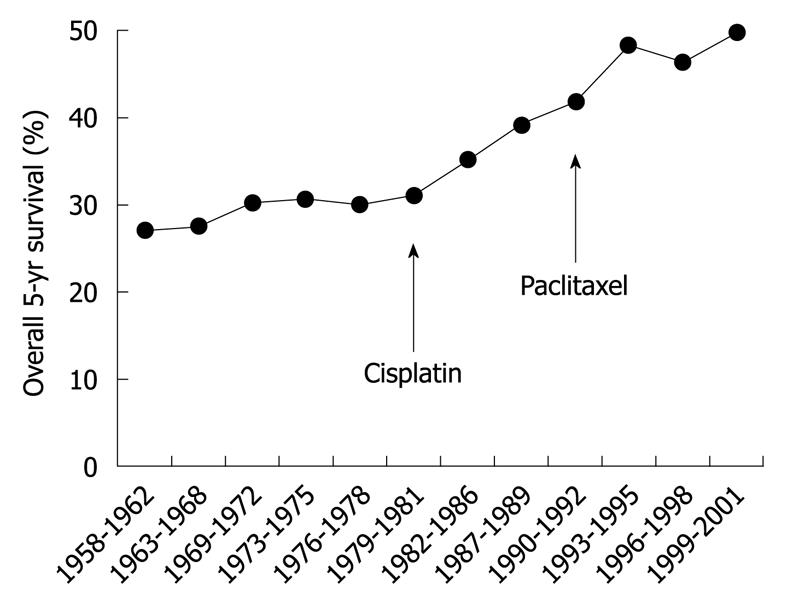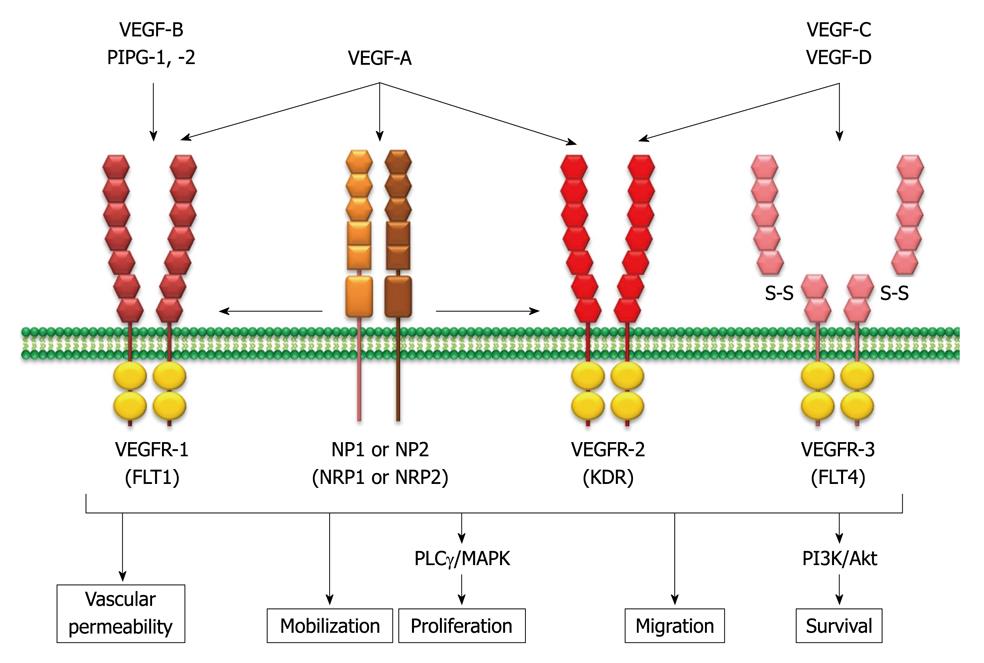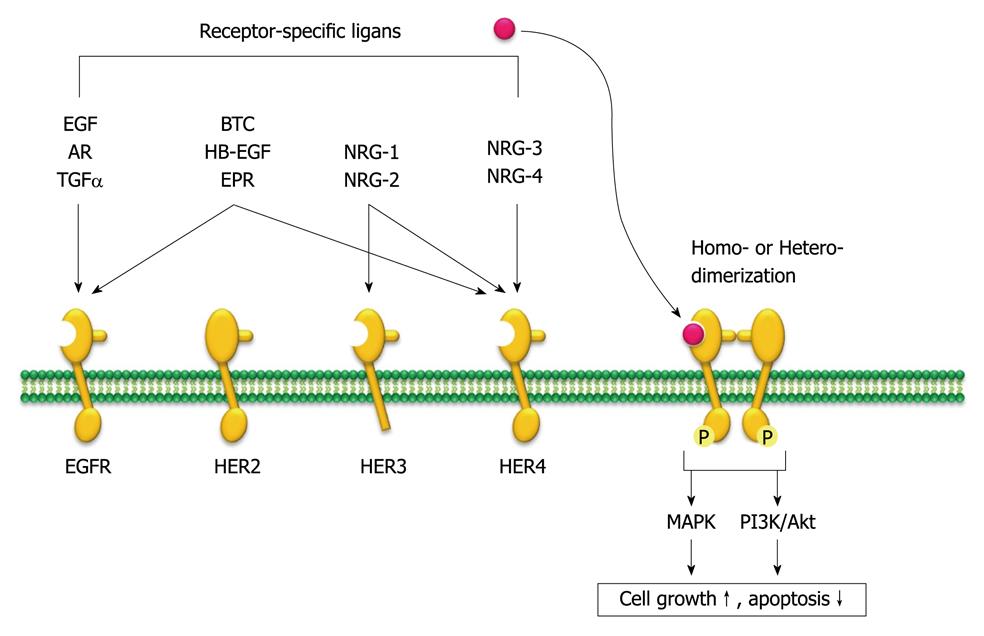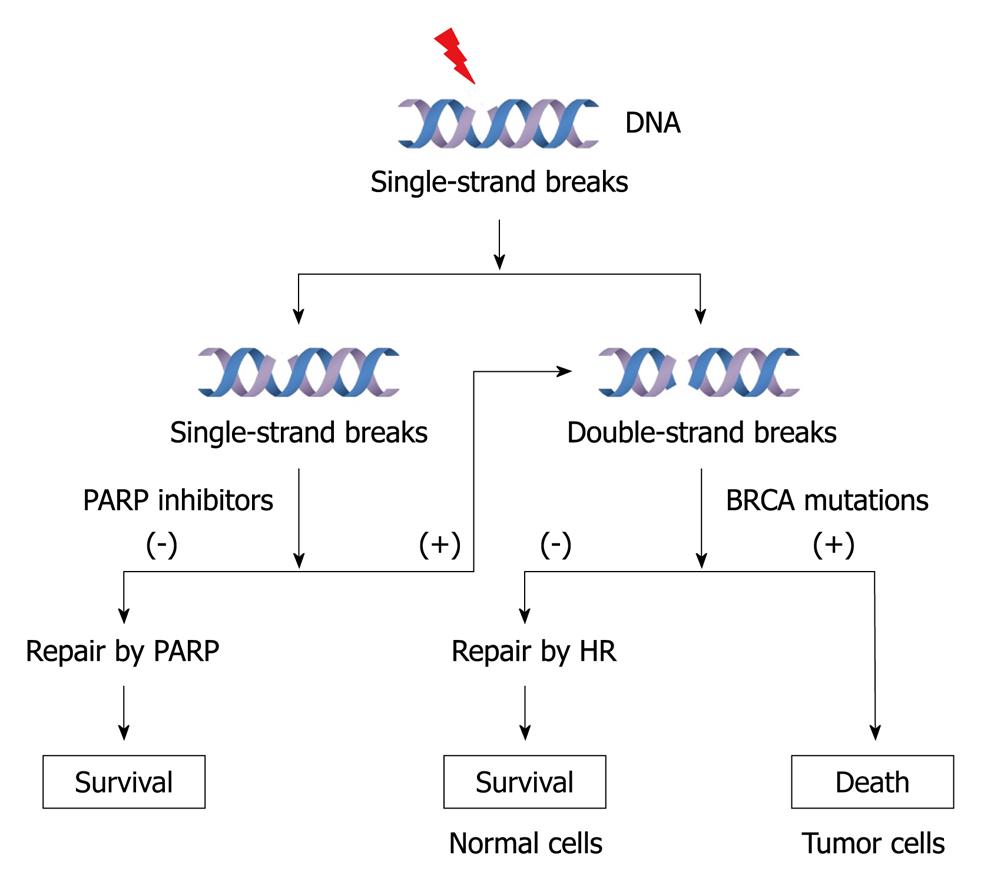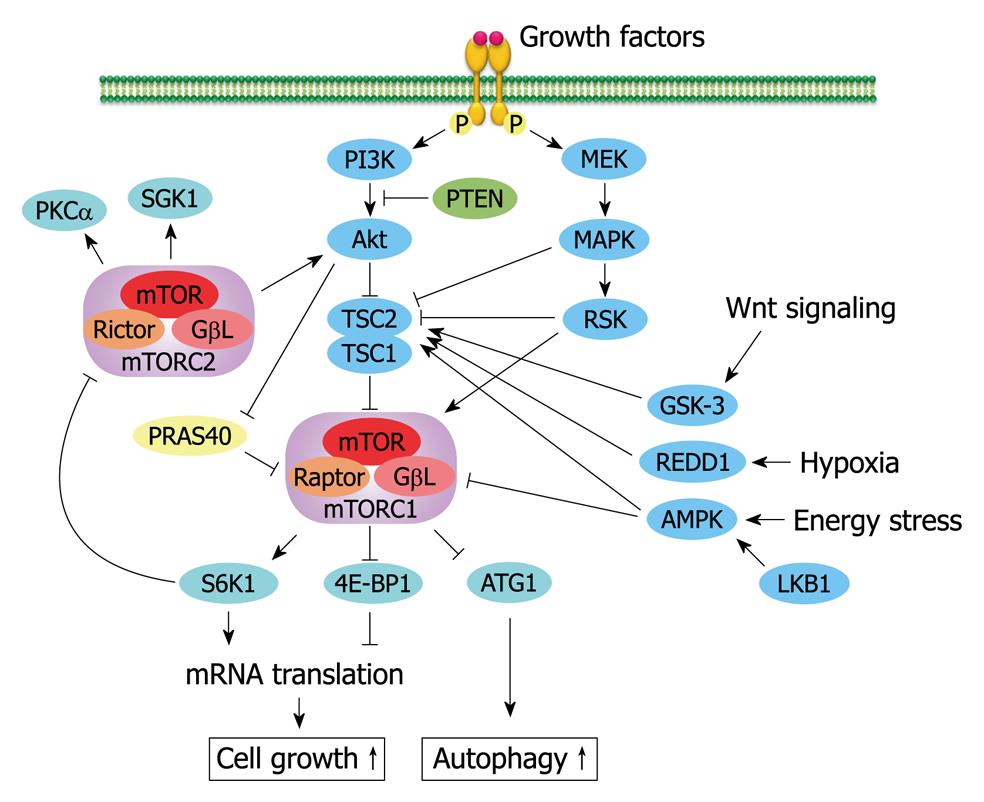Copyright
©2010 Baishideng Publishing Group Co.
World J Biol Chem. Jul 26, 2010; 1(7): 209-220
Published online Jul 26, 2010. doi: 10.4331/wjbc.v1.i7.209
Published online Jul 26, 2010. doi: 10.4331/wjbc.v1.i7.209
Figure 1 Overall 5-year survival by year.
Therapy by alkylating agents (e.g. melphalan) was the standard of care for epithelial ovarian cancer until the 1970s. The US Food and Drug Administration approved the therapeutic agent cisplatin in 1978 and paclitaxel at the end of 1992, as indicated in the figure. Overall 5-year survival of epithelial ovarian cancer was increased after introduction of these agents.
Figure 2 Vascular endothelium growth factor family members and their specific binding ligands.
The mammalian vascular endothelium growth factor (VEGF) family consists of seven structurally related glycoproteins with VEGF-A as the major mediator of tumor angiogenesis among them. The VEGF ligands bind to three structurally similar receptors, and each tyrosine kinase activates the intracellular signaling cascade, including mitogen-activated protein kinase (MAPK) and phosphatidylinositol 3,4,5-kinase (PI3K)/Akt pathways. Subsequently, the pro-angiogenic signaling pathways are activated. PLCγ: Phospholipase C γ; NP: Neuropilin; VEGFR: VEGF receptors; FLT: Fms-related tyrosine kinase; KDR: Kinase insert domain receptor.
Figure 3 Human epidermal growth factor receptor family members and their specific ligands.
The human epidermal growth factor receptor (HER) family consists of four distinct transmembrane tyrosine kinase receptors, and 10 different ligands can selectively bind to each of them. The receptor undergoes homo- or hetero-dimerization that leads to receptor autophosphorylation that activates a series of downstream signaling pathways, such as mitogen-activated protein kinase (MAPK) and phosphatidylinositol 3,4,5-kinase (PI3K)/Akt pathways that control cell growth and apoptotic signaling. AR: Amphiregulin; TGFα: Transforming growth factor α; BTC: β-cellulin; HB-EGF: Heparin-binding epidermal growth factor; EPR: Epiregulin; NRG: Neuregulins; P: Phosphate; EGFR: Epidermal growth factor receptor.
Figure 4 Effect of DNA repair systems on poly(ADP-ribose) polymerase activity.
Double-strand breaks (DSBs) lead to the activation of poly(ADP-ribose) polymerases (PARPs). PARP plays a key role in the repair of SSBs. Treatment with a PARP inhibitor induces DSBs and selectively kills homologous recombination (HR)/breast and ovarian cancer susceptibility gene (BRCA)-deficient cells.
Figure 5 Key regulators of the mammalian target of rapamycin signaling pathway.
Mammalian target of rapamycin (mTOR) forms the catalytic core of two functionally distinct complexes, mTOR complex 1 (mTORC1) and mTORC2. Diverse environmental factors, including growth factors (e.g. insulin, insulin-like growth factor 1 and epidermal growth factor) and stresses (e.g. hypoxia or energy) promote mTORC1-dependent cell growth and down-regulate autophagy. The negative feedback loop signals of mTORC1/p70-S6 kinase 1 (S6K1) suppress the mTORC2/Akt signaling pathway. PTEN: Phosphatase and tensin homolog deleted from chromosome 10; TSC: Tuberous sclerosis complex; Raptor: Regulatory-associated protein of mTOR; Rictor: Rapamycin-insensitive companion of mTOR; MEK: Mitogen-activated protein kinase kinase; RSK: Ribosomal s6 kinase; PRAS40: Proline-rich PKB/Akt substrate of 40 kDa; ATG1: Autophagy-related gene 1; PKCα: Protein kinase C α; SGK1: Serine/threonine-protein kinase 1; GSK-3: Glycogen synthase kinase 3; REDD1: Regulated in development and DNA damage responses 1; AMPK: AMP-activated protein kinase; LKB1: Liver kinase B1; MAPK: Mitogen-activated protein kinase; PI3K: Phosphatidylinositol 3,4,5-kinase; P: Phosphate.
- Citation: Itamochi H. Targeted therapies in epithelial ovarian cancer: Molecular mechanisms of action. World J Biol Chem 2010; 1(7): 209-220
- URL: https://www.wjgnet.com/1949-8454/full/v1/i7/209.htm
- DOI: https://dx.doi.org/10.4331/wjbc.v1.i7.209













